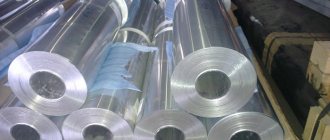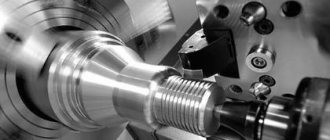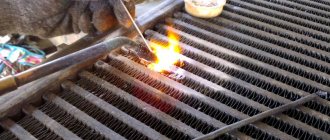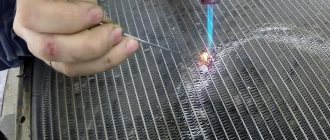Aluminum injection molding is one of the popular metal processing processes, from which products of any desired (even the most complex) configuration are created using exposure to high temperatures. Aluminum die casting is used in production to create high-quality, durable and reliable parts with unique properties.
The described process is one of the fully mechanized manipulations, during which molten metal is fed into a special split mold under artificially created pressure using a piston moving at a fairly high speed.
This method of casting guarantees no shrinkage and a high level of precision in the work. In the process of such creation of parts, the existence of defective products is practically excluded. This is one of the most important advantages of the described process. Parts and other products created in this way have found application in:
- instrument making;
- mechanical engineering;
- aircraft manufacturing
Aluminum is a soft but very durable metal that is difficult to process in various ways, but has a fairly low melting point, which allows it to be cast even at home or in a small workshop. Of course, the most accurate, streamlined process is possible when using professional equipment installed in production workshops.
We will advise you on any questions!
Aluminum injection molding is one of the popular metal processing processes, from which products of any desired (even the most complex) configuration are created using exposure to high temperatures. Aluminum die casting is used in production to create high-quality, durable and reliable parts with unique properties.
The described process is one of the fully mechanized manipulations, during which molten metal is fed into a special split mold under artificially created pressure using a piston moving at a fairly high speed.
This method of casting guarantees no shrinkage and a high level of precision in the work. In the process of such creation of parts, the existence of defective products is practically excluded. This is one of the most important advantages of the described process. Parts and other products created in this way have found application in:
- instrument making;
- mechanical engineering;
- aircraft manufacturing
Aluminum is a soft but very durable metal that is difficult to process in various ways, but has a fairly low melting point, which allows it to be cast even at home or in a small workshop. Of course, the most accurate, streamlined process is possible when using professional equipment installed in production workshops.
Cast aluminum part?
It is usually believed that the use of aluminum casting for loaded parts is justified only when the complex shape of the cast part provides a significant advantage in weight compared to a simple shape, for example, a forged part.
Typically, manufacturing foundries work with only a few foundry alloys, which is justified by the more economical use of foundry equipment, the reduction of raw material inventories, and the reduced risk of mixing different alloys. From a casting quality point of view, it makes more sense to work with an alloy that is technologically advanced than with one that may be on paper and shows slightly better properties, but is more technologically difficult.
From the point of view of foundry workers, these alloys are a special case of cast alloys and therefore can be called a little differently - aluminum cast alloys.
Die casting of aluminum alloys - which alloys are better?
1. AK12 alloy , also called silumin, is a mixture of aluminum and silicon, to which a small amount of magnesium is added (up to 0.5%). The alloy is one of the hardest of the variety of aluminum-based mixtures. It is also characterized by low casting shrinkage and tightness. It is actively used for injection molding due to the fact that it does not crack during the creation of blanks. Used for the production of parts operating under light load.
2. Aluminum alloy AK12M2 is produced by adding a small amount of silicon (11 to 13%), copper (1.8-2%) and iron (0.6-0.9%) to molten aluminum, mainly to make the workpiece better separated from the form). It is mainly used for the production of aluminum ingots and shaped castings.
3. AK9 alloy is produced by mixing aluminum with silicon (85-90% + 8-11%) and adding a small amount of impurities: nickel (up to 0.3%), copper (up to 1%) and zinc (up to 0.5%) . The alloy is characterized by high strength, but does not differ in ductility. It is used for the production of aircraft parts, elements of complex instruments and other workpieces that can withstand high loads, but are not subject to increased vibrations.
4. Aluminum alloy AK9M2, due to the favorable ratio of aluminum, silicon and copper, has the most balanced ratio of hardness to ductility. Due to its physical properties, the alloy is actively used for the production of unloaded parts, housings and parts for various devices. May be subject to artificial aging and hardening.
5. AK5M2 alloy is considered one of the most popular in the aluminum-silicon-copper system. It is distinguished not only by its high strength and relative ductility, but also by its low cost. The alloy is used for “non-critical casting”: the production of aluminum cookware, shaped castings, unloaded parts, etc.
Aluminum die casting or die casting is a quick and relatively inexpensive way to produce large quantities of blanks and parts for the mechanical engineering, medical or food industries. Depending on the specific tasks, you can choose one or another alloy that most accurately meets the final operating conditions of the product.
Silumins are normal
The most commonly used cast aluminum alloy is silumin.
– alloys with a high silicon content. Aluminum alloys with only copper, magnesium and zinc are used much less frequently. The main point is that to obtain a dense casting structure, an alloy with a narrow crystallization range is required, and alloys of eutectic concentration or close to it are better suited for this. In this sense, the Al–I system has a decisive advantage over other systems - its eutectic has a relatively low silicon content of 11.7%, while in the Al–C system the eutectic has 33% copper, and in the Al–Mg system – 34.5% .
Al–I binary alloys have the best casting properties. These include ordinary (normal) silumin with a silicon content of 10 to 13% (AL2 alloy), which is used for castings of complex shapes in the absence of requirements for high mechanical properties.
What is aluminum die casting today?
Today, aluminum injection molding is a full cycle of product production, which can begin from the design of linear equipment to the final product at the output.
The essence of the process is to fill a special mold made according to a template or custom order with molten aluminum. Aluminum die casting makes it possible to inexpensively produce quite complex products due to its low melting point. Finished parts can weigh from several grams to tens of kilograms and have a wide range of applications.
Why is pressure used in aluminum casting?
Aluminum die casting is done to increase mold filling speed, as well as expand product detailing capabilities. In modern production, pressure from 35 to 700 MPa is used for casting blanks from aluminum and other non-ferrous metals.
Similarly, today, at minimal cost, it is possible to cast custom-made aluminum parts for the automotive (aluminum engine blocks, small parts), medical and food industries, as well as numerous parts for the production of household appliances, plumbing equipment and much more.
Among the advantages of aluminum injection molding are high productivity, excellent surface quality of finished products (grade 5-8), as well as high precision detailing of the finished product (grade 3-7).
Preparation for the process
In the aluminum die casting process, molten metal is poured into specially prepared molds by forcing it through a piston.
A piston moving at high speed prevents the hot metal from changing its intended shape and completely eliminates air bubbles from its mass, ensuring no shrinkage.
The distribution of the hot mass of liquid aluminum occurs rapidly, the prepared mold is filled very quickly, after which the entire mass that filled it gradually hardens, exactly repeating the established configuration of the part.
When producing elements with cavities, machines are used that are equipped with special pistons that allow penetration into the filled mold.
The process of injection molding of aluminum alloys has become widespread, and parts manufactured in this way are in great demand due to the high malleability and ductility of the source material.
During work, so-called molds are used, in which the process of aluminum injection molding is carried out.
Silumins special
With higher requirements for strength properties, special silumins are used - hypoeutectic silumins with a silicon content of 4 to 10% and additives of copper, magnesium and manganese in various combinations and quantities. Alloys AL4 and AL9 are silumins with a reduced silicon content and with small additions of magnesium and manganese (AL4) and magnesium (AL9), which improves their mechanical properties. Low-silicon silumins are alloyed with copper, as well as small amounts of magnesium - AL5 alloy, magnesium and manganese (and titanium) - AK5M2 alloy. They have worse casting properties than normal silumin, but are superior in mechanical properties. These silumins after heat treatment have a strength of 200 to 250 MPa and a relative elongation of 1 to 6% - a strength close to that of wrought alloys, but with relatively low ductility. This is due to a coarser structure that is not crushed by plastic deformation. Alloy AL11 belongs to zinc-based silumins - the addition of zinc in such large quantities (10-14%) improves its casting properties, which makes it possible to cast particularly complex parts from it.
Features of the production process
Aluminum die casting is used in production to produce parts of various sizes and shapes, as well as other castings. During the production process, molten aluminum heated to a temperature of 600˚ Celsius is fed under high pressure into a steel mold.
The main distinctive features and features of casting carried out in production workshops:
- rapid heating of the metal to the melting point;
- accurate supply of a certain amount of raw materials intended for casting;
- full automation of the production process;
- creating sufficiently high pressure to perform quality work.
All this allows us to obtain high-quality parts and components of machines and devices, manufactured with high precision and in the shortest possible time. Another distinctive feature that can be recognized as an advantage of manufacturing parts from aluminum using injection molding is high productivity with minimal labor intensity of the process.
Manufacturers take advantage of these positive qualities to create a large number of high-quality parts of various configurations intended for use in a wide variety of industrial applications.
The inherent advantage of aluminum injection molding also lies in the fact that the components of devices and other elements manufactured in this way practically do not require additional processing carried out mechanically.
To carry out all the necessary operations, the use of aluminum injection molding machines used in production workshops is especially popular among manufacturers.
These are machines equipped with a compression chamber:
- hot;
- cold.
Many enterprises widely use horizontally installed cold pressing chambers into which molten aluminum is fed under pressure.
Variety and use of alloys, required machines and molds
Products made of aluminum alloys are in high demand:
- Silumin is an alloy of aluminum and silicon. After adding magnesium to its composition, the final product becomes extremely durable. This is one of the most low-shrinkage and highly airtight alloys. It is not subject to cracking during manufacture and is used to create elements subject to light loads.
- In order to create shaped castings, an alloy is used, which, in addition to aluminum itself, includes copper, silicon and iron. This workpiece is perfectly separated from the mold and is highly durable.
- When creating high-strength elements, an aluminum alloy with the addition of silicon, nickel, copper and zinc is used.
A particular alloy is selected depending on the tasks to be performed by the manufactured parts and the loads that the finished elements will have to withstand.
All operations are carried out on specially created equipment, which can be used both in a production workshop and in a small private workshop.
Using special equipment for aluminum casting, you can create items necessary in everyday life and parts that are very important when assembling various machines and units.
To create the above alloys, it is necessary to use machines equipped with both cold and hot chambers designed to melt the metal. Machines with hot chambers are necessary in the production of alloys containing zinc. The molten metal is introduced into the internal space of the mold gradually. He fills out the entire form.
When working with alloys that contain magnesium and copper, castings are produced due to the fact that the molten composition is introduced into the mold under fairly high pressure. Its level in certain situations reaches 700 MPa. It is this production method that makes it possible to significantly increase labor productivity without increasing the labor intensity of the process, and parts manufactured in this way do not require mechanical processing.
The choice of equipment when creating a workshop or organizing a casting process is based on the characteristics of the technological process. When casting aluminum under pressure, it is as follows:
- In a hot furnace, the metal is heated to the melting point and turns into a liquid state.
- At this time, a special mold must be prepared in the workshop, the internal contour of which fully corresponds to the parameters of the future part.
- Molten metal is fed under high pressure into a prepared mold.
- After cooling, the finished product is removed from the split mold.
Today, some manufacturers use other casting methods. This can be casting into earth, sand or cement, but aluminum injection molding makes it possible to obtain a product with a minimum wall thickness of less than a millimeter. And everything can reach from 4 to 12 kg.
General characteristics and properties
There are quite a large number of varieties of cast aluminum alloys, each of which has its own characteristics. Aluminum cast alloy is characterized by the following performance qualities:
- High casting qualities. This type of metal is often used for casting. High casting qualities allow you to create parts of complex shapes.
- Density. The chemical composition of aluminum casting alloys determines that their density is relatively low. Due to this, the weight of the resulting structure is relatively small.
- Corrosion resistance is also high. It can be reduced by adding various alloying elements.
- Considering the properties of alloys, it should be noted that they have increased strength and hardness. These qualities are achieved by adding a variety of substances.
- High degree of machinability. By casting, blanks are often obtained, which are subsequently brought to a finished state by mechanical processing on milling or other equipment.
Such materials have good casting properties, which makes it possible to produce parts with complex surfaces. Alloys with a high content of magnesium or other alloying elements may be subject to additional heat treatment.
In most cases, the following requirements are imposed on this material:
- Good casting properties. They are considered the most important when considering aluminum alloys of this group. The less pronounced the casting qualities, the worse the solution fills the created mold. Casting properties can be determined by a variety of methods.
- Slight shrinkage. The shrinkage process is almost inevitable when casting into a mold. However, some compositions are more prone to the formation of pitting and other defects during casting, others less so. The less shrinkage, the better quality the product is.
- High fluidity. If the created mold for casting has a large number of complex surfaces, then in order to fill them the composition must have an increased fluidity index.
- Low tendency to form hot cracks. When performing casting operations, there is a possibility of cracks appearing, which reduce the strength of the structure and the performance of the material.
- Low tendency to porosity. The porous structure has less attractive performance characteristics, since it has less strength, absorbs moisture and can be susceptible to corrosion.
- Optimal mechanical and chemical properties. Modern alloying methods make it possible to make lightweight materials more durable. To do this, a variety of components are added. Optimal mechanical properties are represented by a combination of lightness and strength, as well as other qualities.
- Fine-grained homogeneous structure. When considering the features of the structure of the resulting products, it should be noted that a homogeneous one better absorbs the applied loads and the likelihood of defects occurring is significantly reduced. A heterogeneous structure can be characterized by the fact that the product may have a different surface hardness; corrosion may appear on one part, while another may be more resistant to such effects.
The likelihood of the formation of many defects can be eliminated by following the technology of casting and processing of the resulting alloy. In addition, the composition used also, to one degree or another, determines the likelihood of defect formation.
Cast aluminum alloys in ingots
The most important quality can be called fluidity. It determines the filling ability of the casting mold. In addition, attention is paid to the tendency of the composition to form gas and shrinkage voids. The fluidity index is measured by which container can be filled and in what time. It is worth considering that an increased content of oxides causes a decrease in the fluidity index.
The casting process also determines the high probability of the formation of shrinkage cavities. When cooled, the melt decreases in volume. There are two main types of shell formed:
- large;
- macro-shrink.
Various methods are used to determine the degree of shrinkage.
During casting, deformation also often occurs, which causes cracks to form. It is associated with a process that is determined by the compressive stress between the already hardened and mushy composition.
There are several types of aluminum casting alloys, which we will discuss in more detail below.
Devices
Aluminum die casting machines have a number of special technical characteristics. Knowing some parameters and choosing the most suitable equipment to work on:
- Performance. The cost of an aluminum die casting machine directly depends on how many parts it can produce in one hour and, when used in production mode, in 8-10 working hours. The higher the productivity, the higher the cost of the machine.
- Mass of castings. This characteristic also depends on what pumps, engines, pistons and tips the device should be equipped with.
- Dimensions and weight of equipment. The choice depends entirely on the size of the production facility and the total production area.
Machines designed for aluminum injection molding are directly related to large-scale production equipment, although modern manufacturers also offer equipment designed for use in mini-factories. The cost of the car plays a big role in the choice. It is based on the combination of all the above qualities that equipment used both in production and in a small workshop must have.
Most modern models of aluminum die casting machines are equipped with a computer unit, numerous sensors capable of reading and analyzing data on operations, and a high-quality hydraulic system. You can make the right choice only by comparing the capabilities of the purchased equipment and the user’s needs.








